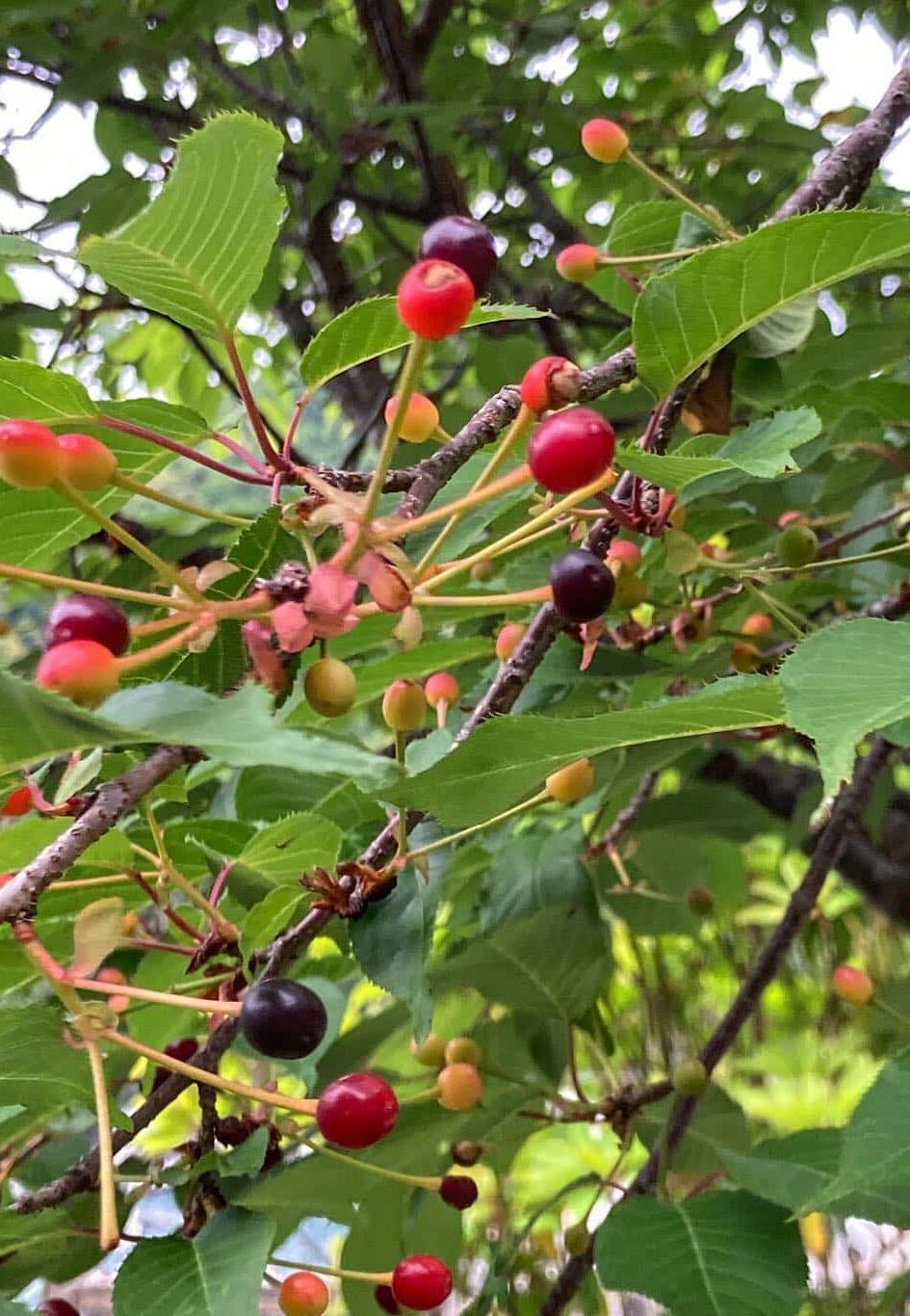The Sakura tree is a popular flowering tree worldwide for its beautiful pink or white blossoms, but the mere population knows that the fruit also has more to offer.
Sakura tree fruits, also known as Cherry Blossom fruit, appear from summer to fall. You can see white or yellow flesh if you bite a ripe red fruit.
So, go through this complete article to know everything about Sakura tree fruits and their edible qualities.
Table of Contents Show
What Does Sakura Tree Fruit Look Like?
The Sakura Tree bears small red fruits that are slightly smaller than regular cherries.
Moreover, unripe fruits are dark green and eventually turn yellow and red upon maturity. These fruits are about 1 cm in diameter.

When the fruit ripens, you can see its smooth and shiny outer cover. Unripe fruits are hard and gradually turn softer.
Additionally, the fruit has a combined taste of sour and bitter and has a single seed inside.
However, Sakura trees are famous for their beautiful pink cherry blossoms rather than their fruits.
Is Sakura Tree Fruit Edible?
As said earlier, Sakura trees are popular for their flowers rather than fruits. Moreover, people don’t prefer to enjoy the fruits as they are not as sweet and juicy as regular cherries.
Additionally, Japanese people also use this fruit in different Japanese cuisines. They also use Cherry Blossom leaves in their dishes.
However, you must not eat the seeds and leaves raw as they contain cyanogenic glycosides, causing you serious digestive disorders and organ failures.
Although the limited consumption has some traditional significance, there is no scientific evidence of the fruit’s medicinal benefits.
Nevertheless, it has cultural symbolic meanings, aesthetic values, and culinary benefits.
In case of unusual behavior in your pets, contact:
Where Does Sakura Tree Fruit Grow?
The Sakura tree is native to many countries in East Asia, like Japan, China, Korea, etc. Due to their beautiful blossoms, people from Europe and America have also started to grow them.
Basically, the Sakura tree needs a temperate climate. Moreover, they can adapt themselves well to well-draining soil rich in organic matter.
Additionally, to flower and produce the fruits, it’s compulsory to plant them in a sunny location that receives at least 6 hours of sunlight daily.
Also, in the first year, you must fertilize the tree with balanced fertilizer and water regularly whenever the soil becomes 1 inch dry.
Mulching around the plant’s base can retain moisture. Make sure to prune the lateral branches in spring to encourage heavy blossoms and fruits.
Thus, you can easily grow a Sakura tree with proper care if you are from USDA zone 5-8, which has a cool winter and warm summer.
From Editorial Team?
More About Sakura Tree Fruit!
Sakura tree fruit is the hero of Japanese cuisines like Sakura Mochi, Sakura Yokan, etc. People also use this fruit to make tea and wine.
Additionally, this fruit is also a traditional medicine for problems like menstrual cramps, inflammation, stomach upsets, and many more.
However, don’t forget to consult with your doctor before consuming unknown things as a medicine.


